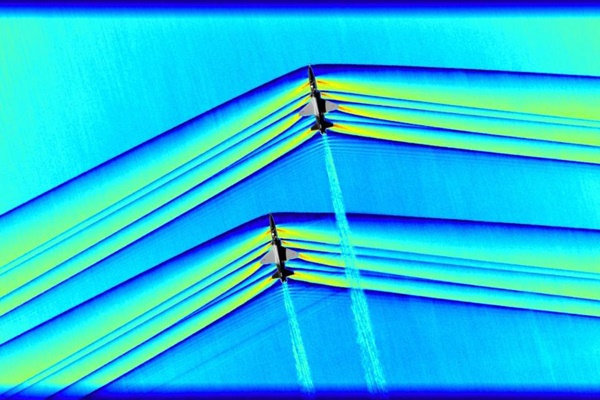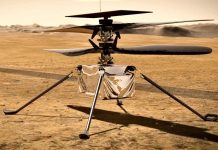
March 8 (UPI) — NASA shared the results of a first-of-its-kind imaging technique this week. The air-to-air images revealed interactions between shockwaves produced by two high-speed T-38 jets — another first.
The feat marks the first time NASA has successfully used the advanced air-to-air photographic technology in flight.
“I am ecstatic about how these images turned out,” J.T. Heineck, physical scientist at NASA’s Ames Research Center, said in a news release. “With this upgraded system, we have, by an order of magnitude, improved both the speed and quality of our imagery from previous research.”
When an aircraft flies faster than the speed of sound — supersonic speeds — shockwaves are produced. When the shockwaves merge as they travel through the atmosphere, sonic booms are produced.
Scientists at NASA are currently working to develop a quieter supersonic jet. The X-59 Quiet SuperSonic Technology X-plane, or X-59 QueSST, will travel at supersonic speeds, but it will only produce a low rumble — no sonic booms.
In order to produce quieter shockwaves, scientists need to better understand how the waves behave in the atmosphere. Scientists say the latest images will aid their cause.
The new images allowed scientists to see, for the first time, the flow and merging of the shockwaves with extraordinary clarity.
“What’s interesting is, if you look at the rear T-38, you see these shocks kind of interact in a curve,” said Neal Smith, research engineer with AerospaceComputing Inc. working in the fluid mechanics laboratory at Ames. “This is because the trailing T-38 is flying in the wake of the leading aircraft, so the shocks are going to be shaped differently. This data is really going to help us advance our understanding of how these shocks interact.”
Scientists captured the images using a NASA B-200 King Air outfitted with an upgraded camera system. The B-200 flew just beneath the two jets and the camera system snapped photographs using an extremely high frame rate.
The breakthrough happened during the fourth phase of the Air-to-Air Background Oriented Schlieren flights, or AirBOS mission.
“The biggest challenge was trying to get the timing correct to make sure we could get these images,” said Heather Maliska, AirBOS sub-project manager. “I’m absolutely happy with how the team was able to pull this off. Our operations team has done this type of maneuver before. They know how to get the maneuver lined up, and our NASA pilots and the Air Force pilots did a great job being where they needed to be.”






